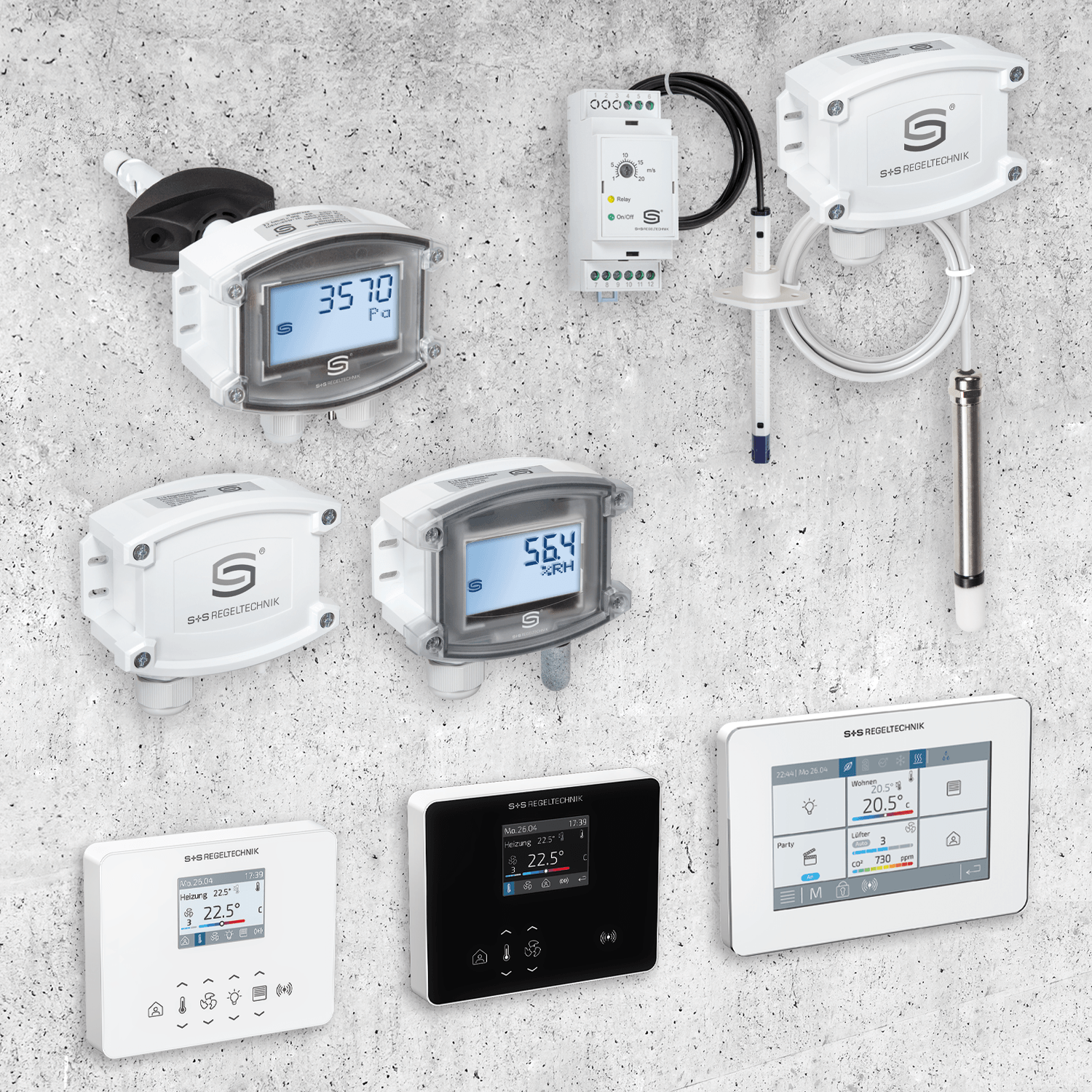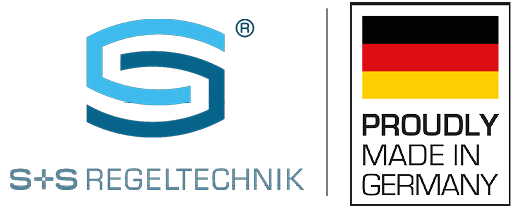- New
- Sale
- Temperature
- Humidity
- Pressure
- Light Intensity & Motion
- Air Quality
- Flow
- Rymaskon
- Modbus | Wireless Modbus
- EtherCAT P
- Accessory
Intelligent building automation
What is building automation?
The term building automation stands for the automatic control, regulation, monitoring and optimisation of building functions. Building automation integrates heating, ventilation, air conditioning, lighting, shading and other building technology into an intelligent overall system. Networked sensors, actuators and control elements communicate with each other in a bus system. This enables smart and optimised interaction between the various components.
What is the difference to traditional electrical installations?
What used to be realised by installing individual components is now networked and centrally controlled by the system technology / bus system. Intelligent building automation ensures efficient, safe and convenient operation of the building, saves energy and operating costs, increases well-being and promotes the sustainability of your buildings.

How does building automation work?
Building automation always consists of two main components: Hardware and software. By hardware we mean the measurement and control technology (I&C technology) - usually consisting of sensors, actuators, controllers, switch cabinets, radio or cable networks installed in the building. The software performs higher-level tasks in the energy and building management system. Technical terms such as building control technology or computer-aided building management are commonly used in this field.
Building automation at three levels
- The field level is responsible for operating the various technical systems in a building. To do this, sensors record information (e.g. temperature, brightness) and pass it on to the actuators. These convert the data obtained into switching signals, e.g. for the lighting, heating, air conditioning and ventilation systems.
- The automation level has the task of controlling and regulating the technical building systems on the basis of the data supplied and the specifications of the management level.
- The management level collects all information (higher-level operation and monitoring of processes, alarms in the event of faults, etc.) from the building automation system and analyses it. Its task is to implement overarching control and optimisation procedures.
What are the advantages of building automation?
Building automation essentially pursues three goals:
- Optimising building efficiency and reducing operating cost
- Increasing the safety of people and technology in the building
- Increasing comfort and well-being in the building
An investment in building automation is always worthwhile: it only accounts for around 1-2% of the construction costs of a new building. Thanks to the huge savings potential, this small additional outlay usually pays for itself after just a few years.
How much energy does good building automation save?
Building automation networks all energy-intensive systems in the building with each other. This results in many starting points for system optimisation. In addition, the physics of the building and people's usage behaviour also have a significant influence on energy and resource consumption.
An automated office building can save up to 30 % thermal energy and 13 % electricity compared to a non-automated building (according to the DIN V 18599-11 and EN 15232 standards).
Where is building automation used?
Commercial and public buildings in particular, such as hospitals, airports, shopping centres, offices and administrative buildings, successfully use building automation systems. This allows the temperature, air quality and ventilation of individual rooms to be monitored and centrally controlled - depending on room occupancy if necessary. This ensures a healthy indoor climate and better energy efficiency. Sun protection systems can be operated automatically and lighting can also be controlled centrally. When public buildings are automated, they are referred to as smart buildings. In the private sector, the term smart home is commonly used.
Which system components does S+S offer?
The increasing demand for intelligent sensors and controls for building automation also characterises our product range. In addition to our traditional range of sensor devices for temperature, humidity, pressure, air quality & flow, brightness & movement, we are also consistently expanding our portfolio of wireless sensors and networkable devices for building and system automation.
The latest highlights include W-Modbus technology. This wireless communication standard replaces the conventional RTU cable while retaining the standardised Modbus protocol. W-Modbus makes it easier to set up intelligent building automation through reliable and secure wireless communication and even overcomes challenges such as fire doors and the like with ease.
Our Rymaskon series is the perfect solution for your intelligent individual room control. With the room control units, you can keep an eye on all room functions at all times and influence them as required. This allows you to control the temperature, fans, sun shading and lighting. The device communicates with the building management system or can also be used as a stand-alone solution.


Author: Tino Schulze | CEO S+S Regeltechnik GmbH
Tino Schulze is Managing Director of S+S Regeltechnik GmbH. As a successful entrepreneur, he has developed S+S over the last 25 years into Europe's leading manufacturer of advanced sensor technology for measurement, control and regulation tasks in building automation and mechanical engineering.
Contact: mail@SplusS.de

